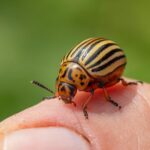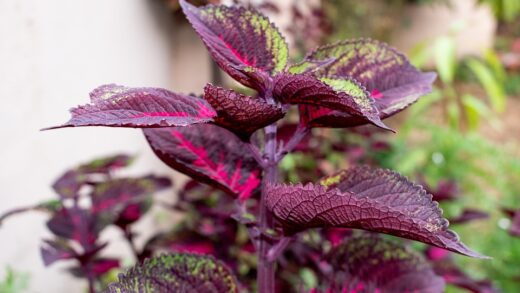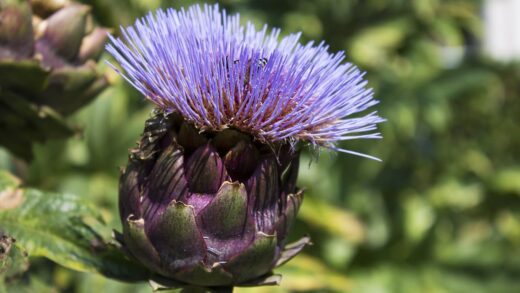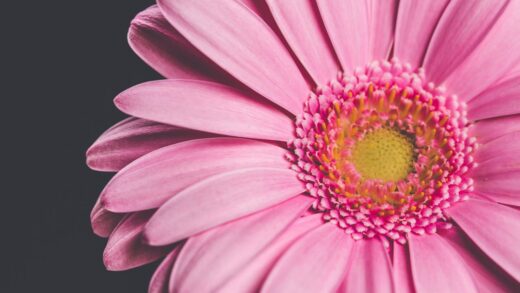Brugmansia, commonly known as angel’s trumpet, represents a genus of breathtakingly beautiful, yet profoundly toxic, flowering plants. Native to the tropical regions of South America, these woody shrubs or small trees are renowned for their large, pendulous, trumpet-shaped flowers that release a captivating fragrance, especially in the evening hours. Successful cultivation demands a thorough understanding of their specific needs, from soil composition and watering schedules to nutrient requirements and pest control. Providing the correct environment and care regimen is paramount to unlocking the full, spectacular potential of these botanical wonders, ensuring a profusion of their dramatic blooms throughout the growing season. Neglecting these fundamental aspects can lead to diminished flowering, susceptibility to diseases, and a generally lacklustre appearance, detracting from the very qualities that make this plant a sought-after specimen in gardens and conservatories worldwide.
Understanding the plant’s nature
Brugmansia belongs to the Solanaceae family, which also includes tomatoes, potatoes, and nightshades, hinting at its robust and often rapid growth habits. These plants are not true annuals or perennials in temperate climates but are best described as tender perennials, meaning they cannot tolerate frost. Their large, soft leaves are indicative of a high water requirement, as significant moisture is lost through transpiration, particularly in warm and sunny conditions. The sheer size and profusion of their flowers also signify a substantial need for nutrients to fuel such vigorous production. Therefore, one must approach their care with the mindset of sustaining a highly productive and fast-growing organism.
The natural habitat of Brugmansia is in the Andean regions of South America, where they grow in well-drained, fertile soils, often in mountainous areas with ample rainfall and moderate temperatures. Replicating these conditions is the key to successful cultivation in other parts of the world. This involves providing protection from extreme heat and cold, ensuring the soil remains consistently moist but not waterlogged, and offering a steady supply of essential nutrients. Understanding their origin provides critical clues to their preferences for light, water, and soil, forming the foundation of a successful care strategy.
It is crucial to acknowledge the plant’s life cycle, which includes periods of active growth and flowering, typically from spring through autumn, followed by a period of dormancy or reduced growth in the winter. Care practices must adapt to these seasonal changes. For instance, watering and feeding should be frequent and generous during the active growing season but significantly reduced during the winter months to prevent root rot and other issues. This cyclical approach to care respects the plant’s natural rhythms and is essential for its long-term health and vitality.
Finally, the toxicity of all parts of the Brugmansia plant cannot be overstated; it contains potent tropane alkaloids. This requires careful handling during all maintenance activities, such as pruning, repotting, or propagation. Wearing gloves is highly recommended to prevent skin irritation, and one should always wash their hands thoroughly after contact. This inherent toxicity also means the plant should be positioned in an area where it is not accessible to children or pets, ensuring that its beauty can be enjoyed without risk.
Optimal growing conditions
To thrive, Brugmansia requires a location that provides a delicate balance of sunlight and shade. Ideally, they should receive direct morning sunlight for at least six to eight hours, followed by partial shade during the hottest part of the afternoon. This protects the large, delicate leaves from scorching and reduces water stress on the plant. In hotter climates, providing more afternoon shade is crucial, whereas in cooler, more northern latitudes, they can tolerate full sun all day, provided their moisture needs are met. The quality and intensity of light directly impact flower production, with insufficient light leading to sparse blooming.
The choice of soil is another critical factor for the health of angel’s trumpets. They demand a rich, fertile, and well-draining growing medium. A high-quality potting mix amended with organic matter such as compost or well-rotted manure is ideal for container-grown specimens. For plants in the ground, the soil should be improved by digging in generous amounts of organic material to enhance its structure, fertility, and water-holding capacity. Good drainage is non-negotiable, as Brugmansia roots are susceptible to rot if left sitting in waterlogged soil for extended periods.
Temperature plays a significant role in the life of a Brugmansia. They are tropical plants and flourish in warm, humid conditions, with an ideal daytime temperature range between 15°C and 28°C. They are not frost-hardy and will be severely damaged or killed by freezing temperatures. Therefore, in climates with cold winters, they must be grown in containers that can be moved indoors or to a protected location before the first frost. This protection is a fundamental aspect of their care in non-tropical regions.
Proper air circulation is also beneficial, as it helps to prevent the development of fungal diseases. When planting in the ground, allow ample space between the Brugmansia and other plants to ensure air can move freely around the foliage. For container plants, avoid overcrowding them on a patio or in a greenhouse. Good air movement, combined with correct watering practices, is a key preventative measure against common pathogens that can affect the plant’s health and appearance.
Watering and feeding regimen
Brugmansia plants are notoriously thirsty and require copious amounts of water, especially during the peak growing season of spring and summer. Their large leaves have a vast surface area from which water evaporates, meaning the soil can dry out very quickly, particularly on warm, sunny, or windy days. It is not uncommon for a large, potted Brugmansia to require watering once or even twice daily during hot spells. The primary goal is to keep the soil consistently moist, but never saturated or waterlogged. Allowing the plant to wilt from thirst can cause stress, leading to leaf drop and bud abortion.
The method of watering is as important as the frequency. It is best to water the plants deeply, allowing the water to penetrate the entire root ball until it begins to drain from the bottom of the container. This encourages the roots to grow deep into the soil, creating a more resilient plant. Shallow, frequent watering can lead to a weak, shallow root system that is more susceptible to drying out. Watering in the early morning or evening is preferable to midday, as this minimizes water loss through evaporation and allows the plant to absorb the moisture more efficiently.
Alongside their high water needs, angel’s trumpets are also very heavy feeders. Their rapid growth and prolific flowering require a constant and substantial supply of nutrients. During the active growing season, a regular fertilization program is essential. A balanced liquid fertilizer, applied at half-strength with every watering or at full strength once a week, will support healthy foliage and flower production. Alternatively, a slow-release granular fertilizer can be incorporated into the soil at the beginning of the season.
As the season progresses, particularly during the peak flowering period in summer, it is beneficial to switch to a fertilizer that is higher in potassium, such as a tomato feed. Potassium is crucial for promoting the development of flowers and can lead to a more impressive and sustained blooming display. It is important to follow the manufacturer’s instructions for any fertilizer product to avoid over-fertilizing, which can lead to salt buildup in the soil and damage the plant’s roots. Always apply fertilizer to moist soil to prevent root burn.
Pruning and shaping
Pruning is a vital aspect of Brugmansia care, serving several important functions including shaping the plant, encouraging bushier growth, and promoting more abundant flowering. The best time to perform major pruning is typically in the late autumn, when preparing the plant for winter storage, or in early spring, just before new growth begins. This timing minimizes stress on the plant and allows it to direct its energy into producing a strong framework for the upcoming season’s growth and blooms.
The primary structure of a Brugmansia plant is defined by its branching pattern. A key moment in its development is the formation of the first ‘Y’ in the main stem. Flowers will only form on new growth that emerges above this initial ‘Y’. Therefore, it is critical not to prune below this point unless you intend to retrain the plant from a single stem. Pruning should focus on the lateral branches that grow from this main framework. Cutting these branches back encourages them to produce more side shoots, and since flowers form on new wood, more branches mean more potential for flowers.
When making pruning cuts, always use sharp, clean secateurs or loppers to create a clean wound that will heal quickly, reducing the risk of disease entry. A general rule of thumb is to remove up to one-third of the plant’s growth. Focus on removing any dead, damaged, or weak-looking branches, as well as any that are crossing over and rubbing against each other. This thinning-out process not only shapes the plant but also improves air circulation through the canopy, which is beneficial for disease prevention.
Throughout the growing season, light trimming or pinching can be done to maintain the desired shape and size of the plant. This involves simply pinching off the growing tips of branches to encourage them to branch out further. This technique is particularly useful for creating a denser, more compact plant with a greater number of flowering stems. Regular, thoughtful pruning transforms the Brugmansia from a potentially unruly shrub into a well-structured and floriferous specimen.
Pest and disease management
Despite their toxicity, Brugmansia plants can be susceptible to a range of common garden pests, particularly sap-sucking insects. The most frequent culprits include spider mites, aphids, whiteflies, and mealybugs. These pests typically congregate on the undersides of leaves and at the tender growing tips, feeding on the plant’s sap. This can cause leaves to yellow, distort, or drop prematurely, and in severe infestations, can significantly weaken the plant. Regular inspection of the foliage is the first line of defence.
Spider mites are a particularly common problem, especially in hot, dry conditions. Their presence is often indicated by a fine webbing on the undersides of leaves and a stippled, unhealthy appearance of the foliage. Increasing humidity around the plant by misting it with water can help to deter spider mites. For active infestations of most sap-sucking pests, spraying with insecticidal soap or horticultural oil can be effective. It is crucial to ensure thorough coverage, especially on the undersides of the leaves where these pests hide.
Fungal diseases can also affect Brugmansia, with root rot being the most serious threat, typically caused by overwatering or poorly draining soil. To prevent this, it is essential to allow the soil to dry out slightly between waterings and to ensure that pots have adequate drainage holes. Fungal wilts, such as fusarium and verticillium wilt, are soil-borne diseases that can cause sudden wilting and death. There are no chemical cures for these, so prevention through the use of sterile potting mix and avoiding contamination from infected garden soil is key.
Another potential issue is mosaic virus, which appears as mottled yellow or light green patterns on the leaves. This virus is often transmitted by pests like aphids and there is no cure for it. While it may not kill the plant, it can affect its aesthetic appeal and vigour. The best approach is to manage pest populations effectively to prevent the spread of the virus. Maintaining a healthy, well-fed, and properly watered plant will also make it more resilient and less susceptible to both pests and diseases.
Winter care and dormancy
For gardeners in climates with freezing winters, providing proper winter care is the most critical step in ensuring the long-term survival of their Brugmansia. As these plants are native to tropical regions, they cannot withstand frost. The primary goal of winter care is to protect the plant from cold temperatures and allow it to enter a state of dormancy or semi-dormancy until the warmth of spring returns. This process should begin in the autumn, well before the first expected frost date.
The first step in preparing a Brugmansia for winter is to gradually reduce watering and cease fertilization. This signals to the plant that the growing season is coming to an end and encourages it to slow down its metabolic processes. Before moving the plant indoors, it is advisable to give it a significant pruning. This not only makes the plant more manageable in size for indoor storage but also helps to remove any potential pests that may be hiding in the foliage. Prune back the branches, ensuring you leave the main ‘Y’ structure intact for the following year’s growth.
The ideal storage location for a dormant Brugmansia is a cool, dark, and frost-free area such as a basement, garage, or unheated shed, where temperatures remain consistently above freezing, ideally between 5°C and 10°C. In these conditions, the plant will likely drop all of its leaves and enter a state of full dormancy. During this period, it requires very little water, perhaps only a small amount once a month, just enough to prevent the roots from completely drying out. The soil should be kept on the dry side to prevent root rot.
Alternatively, Brugmansia can be overwintered as a houseplant in a bright, cool room. In this case, it may not enter full dormancy and might retain some of its leaves. It will still require significantly less water and no fertilizer compared to the summer months. Regardless of the method chosen, it is important to inspect the plant periodically throughout the winter for any signs of pests or disease. When spring arrives and the danger of frost has passed, the plant can be gradually reintroduced to outdoor conditions, and normal watering and feeding can resume to awaken it from its winter slumber.

















